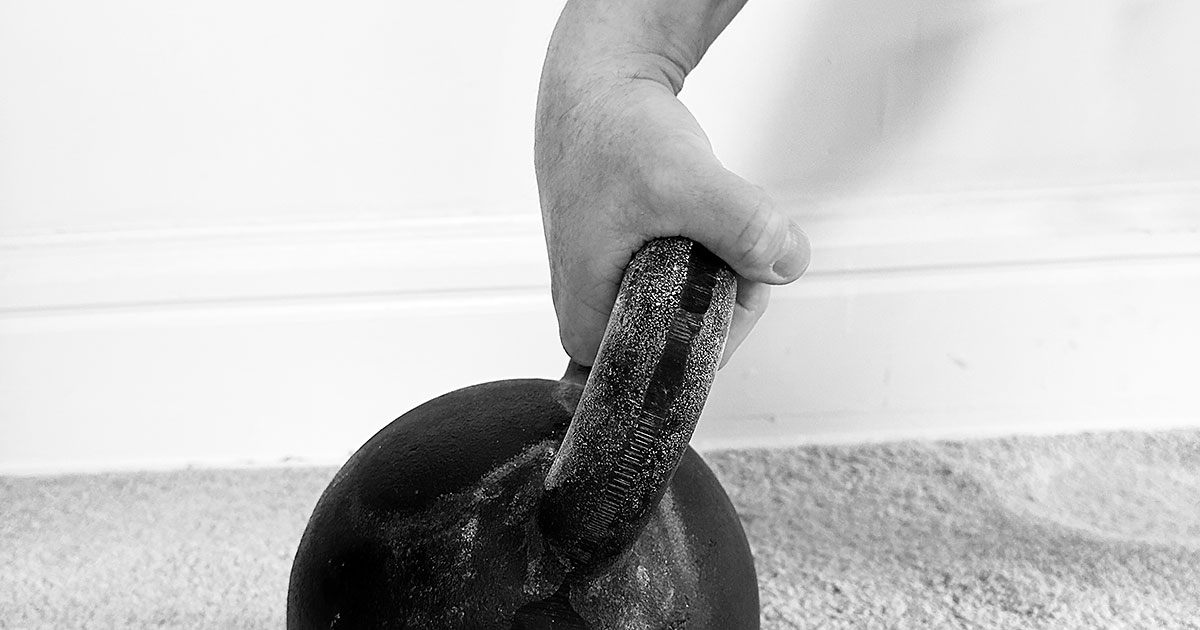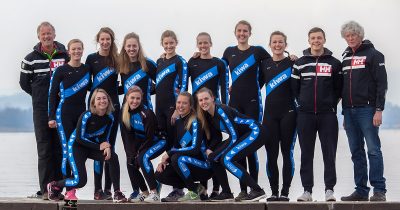
One of the lessons I learned over 22 years ago at my kettlebell certification with Pavel was that there is a huge difference between catching a water balloon and absorbing the incoming water balloon. Especially in below-freezing temperatures!
“Catching” the water balloon usually results in getting wet, as the catch causes the balloon to pop. Absorbing the incoming balloon meant it would not pop, and you could “return fire.” Good times.
What does this have to do with the kettlebell snatch?
Are you absorbing the drop, or are you catching the drop?
Absorbing the drop means you are guiding the kettlebell down and back into the hips/hinge, so the energy and force of that drop are caught by the hips, not the arm. Done successfully, this absorbing “loads the spring” to redirect that energy into the next snatch. Powering the hip extension by the eccentric loading of the drop and distributing the energy throughout the body.
Catching the drop means just that. The drop is caught, so the momentum of the kettlebell almost stops. Once you “stop” the kettlebell, you will need to “dead start” the next snatch, requiring more effort for every rep. This also creates skin stress in the hand as the kettlebell wants to continue dropping, pulling the skin violently to stop the kettlebell. Not to mention the loading of the working arm and shock through the system as the kettlebell is caught.
Which of those sounds better to you? Absorbing? Correct.
But how do you practice absorbing the drop?
When I saw the reverse half snatch from Tim Almond, StrongFirst Senior Emeritus, I knew it was tailor-made for just this purpose. It separates the concentric portion of the snatch (getting it overhead) from the eccentric portion (the drop) with a twist. Well, not with an actual twist but a surprise ending, which is also known as a twist. But again, it’s not a twist of the kettlebell. Anyway, moving on to the drill.
You will take a light to medium-sized kettlebell and perform this sequence:
Clean > press > drop from the top into a clean > press > drop from the top into a clean
for the desired number of repetitions
Using the low five drill and combining it with the cue to “throw” the kettlebell through your stomach on the drop will amplify your reverse half snatch.
Several things are happening during the reverse half snatch:
- The military press “informs” the path for the drop.
- A low to moderate intensity practice of the press.
- A pause at the top to enhance the lockout.
- A unique breathing pattern emerges. (See Bonus #1.)
- The drop must be absorbed and redirected into a clean.
That final point is the key. Redirecting the kettlebell into a clean from the overhead drop will require absorbing the energy of the drop. It teaches you how to finesse the drop into a clean. If too much power is rebounded into the clean, you will get hit by the kettlebell coming into the rack position. If the kettlebell is caught and stopped, the clean will be a shrug and pull with the arm. However, if the energy from the drop is caught and dissipated by the hips, it can be smoothly returned into a clean.
Use this drill in short sets of three to four reps to perfect the drop in your kettlebell snatch. Let us know on the StrongFirst Forum how it works for you.
See the StrongFirst’s SPEED METAL online course with Derek Toshner,
StrongFirst Certified Master Instructor to learn this and much more
Now available for a special limited-time offer!
Bonus #1
The reverse half snatch breathing pattern:
- Inhale to the rack position
- Exhale during the final third of the press
- A brief breath hold
- Inhale during the hike and clean
You can hear this sequence in the video above.
Bonus #2
The deep grip is recommended for the reverse half snatch.

This grip may be new to you, but it is the best way to tame the arc of the clean and end up in the perfect rack position for the press portion of the reverse half snatch. It also assists in not casting the kettlebell from the top by just thinking of goose-necking the wrist slightly on the drop and keeping the handle securely in the deep grip. The drop is simplified. Trying to cast the kettlebell from the overhead lockout grip where the handle is deep in the hand to the fingers (to skip the callouses) introduces more moving parts to the drop, and while learning the snatch, this can create confusion. The deep grip simplifies the drop, but it is not permission to over-grip the kettlebell. Just let the little bit of goose-necking at the wrist secure the kettlebell for the drop. And, by the way, a more powerful concentric.

Special Offer: 25% off until Thursday, August 15th
CLICK HERE!








